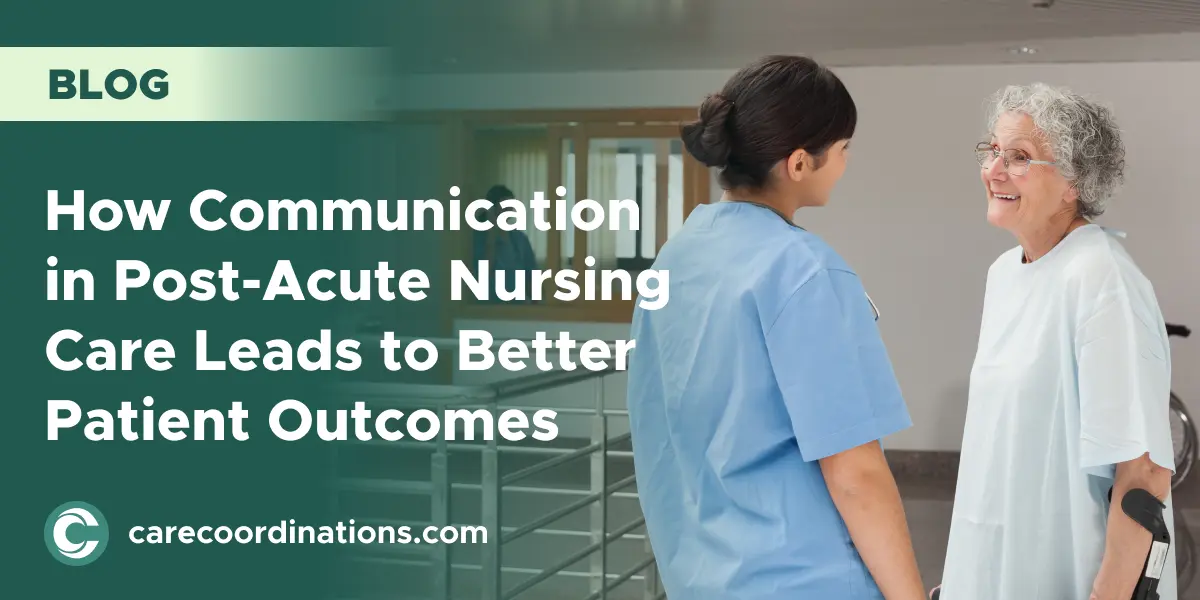Effective communication is a cornerstone of quality nursing care in a complex, fast-paced healthcare environment. Studies have shown poor communication can lead to serious medical errors and decreased patient satisfaction.
Conversely, when nurses communicate effectively, they build trust, ensure safety, and enhance the patient experience.
This article explores how communication in nursing leads to better patient outcomes.
Importance of Communication in Nursing
Communication in nursing encompasses various forms, including verbal, nonverbal, written, and visual interactions. Each form plays a crucial role in nurses’ daily responsibilities.
⇒ Verbal Communication: Involves the spoken words and tone of voice used during interactions with patients, families, and healthcare teams.
⇒ Non-verbal Communication: Body language, facial expressions, and eye contact that convey empathy and understanding.
⇒ Written Communication: Accurate and clear documentation in patient records, care plans, and electronic health records.
⇒ Visual Communication: Using diagrams, charts, and visual aids to explain medical conditions and procedures.
Also Read: 5 Key Benefits of Inter-professional Collaboration in Post-Acute Care
Role of Communication in Nursing
Effective communication in nursing serves multiple critical functions.
⇒ Building Trust with Patients: Trust is established through clear, compassionate, and consistent communication. For instance, a nurse who listens to a patient's concerns and explains procedures thoroughly builds a rapport that reassures and comforts the patient.
⇒ Effective Handoff Between Shifts: Accurate and detailed communication during shift changes ensures continuity of care. A successful handoff involves summarizing the patient’s condition, recent changes, and upcoming care plans to the incoming nurse, reducing the risk of errors.
⇒ Coordination with Healthcare Professionals: Teamwork in healthcare relies on clear communication. Nurses coordinate with doctors, therapists, and other staff to create cohesive care plans. Effective communication prevents misunderstandings and promotes a unified approach to patient care.
Benefits of Effective Communication
Improved Patient Safety
Clear communication is vital for patient safety. It reduces medical errors and enhances patient understanding of their health conditions and treatment plans.
⇒ Reduction in Medical Errors: A 2016 study by Johns Hopkins found that medical errors are the third leading cause of death in the U.S. Effective communication can prevent these errors by ensuring that all healthcare providers are on the same page regarding patient care.
⇒ Enhanced Patient Understanding: Patients who understand their health conditions and treatment options are more likely to follow through with care plans. This understanding is fostered through clear explanations and patient education.
Increased Patient Satisfaction
When patients feel heard and valued, their satisfaction with care increases, leading to better overall health outcomes.
⇒ Feeling Heard and Valued: Patients are more satisfied when their concerns are acknowledged and addressed. This involves not just listening but also responding empathetically to their needs.
⇒ Better Engagement and Compliance: Engaged patients are more likely to adhere to treatment plans. This leads to better health outcomes and reduces the likelihood of readmissions.
Enhanced Team Collaboration
Effective communication fosters a collaborative environment among healthcare staff, leading to smoother workflows and better patient care.
⇒ Smoother Teamwork: Clear communication ensures the healthcare team understands their roles and responsibilities, reducing conflicts and improving efficiency.
⇒ Streamlined Processes: Effective communication streamlines processes, making them more efficient. For example, using standardized communication tools like SBAR (Situation-Background-Assessment-Recommendation) helps ensure that important information is conveyed consistently.
Also Read: Top 10 Reasons for Effective Collaboration Inside Post-Acute Care Teams
Strategies for Effective Communication in Nursing
Active Listening
Active listening involves fully concentrating, understanding, responding, and remembering the patient’s words.
⇒ Techniques for Active Listening: Reflective listening, asking open-ended questions, and summarizing the patient’s words to ensure understanding.
⇒ Benefits of Active Listening: Increased patient satisfaction, better patient outcomes, and stronger nurse-patient relationships.
Clear and Concise Communication
Clarity is essential in healthcare settings to avoid misunderstandings.
⇒ Clarity is important. Clear instructions and explanations prevent errors and ensure patients and colleagues understand their roles and responsibilities.
⇒ Tools and Techniques for Clear Communication: Simplified language, avoiding medical jargon, and using the teach-back method to confirm understanding.
Cultural Competence
Cultural competence involves understanding and respecting cultural differences in healthcare settings.
⇒ Understanding Cultural Differences: Being aware of and sensitive to patients’ cultural backgrounds can improve communication and patient care.
⇒ Strategies for Effective Cross-Cultural Communication: Training programs, using culturally appropriate materials, and employing interpreters when necessary.
Use of Technology
Technology plays a significant role in improving communication in nursing.
⇒ Role of Healthcare Software Solutions: Tools like electronic health records (EHRs), communication apps, and telehealth platforms enhance real-time communication and information sharing.
⇒ Examples of Technology That Aid Communication are EHRs for accurate documentation, messaging apps for quick communication among staff, and telehealth for remote patient interactions.
Challenges in Communication and How to Overcome Them
Common Barriers
Effective communication in nursing faces several barriers, including language differences, emotional challenges, and physical/environmental factors.
⇒ Language Barriers: Patients who speak a different language than their healthcare providers can face significant challenges. Solutions include using interpreters and translation services.
⇒ Emotional Barriers: Stress, fatigue, and emotional distress can impede communication. Providing emotional support and encouraging self-care among healthcare staff can help.
⇒ Physical and Environmental Barriers: Noise, lack of privacy, and busy environments can hinder communication. Solutions include creating quiet zones for conversations and ensuring private areas for sensitive discussions.
Solutions to Overcome Barriers
Overcoming communication barriers requires targeted strategies and continuous efforts.
⇒ Training and Education Programs: Regular training on communication skills, cultural competence, and the use of technology can enhance nurses’ ability to communicate effectively.
⇒ Use of Interpreters and Translation Services: Employing professional interpreters and providing access to translation services can bridge language gaps.
⇒ Creating a Supportive Environment: Encouraging open communication, providing emotional support, and creating a culture of respect and empathy can foster better communication.
Also Read: What is Inter-professional Collaboration in Post Acute Care?
Empower Your Nursing Team: Enhance Communication for Better Patient Outcomes
Effective communication in nursing is crucial for ensuring patient safety, improving patient satisfaction, and enhancing team collaboration. Nurses can overcome communication barriers and provide high-quality care by adopting active listening, clear communication, cultural competence, and technology.
Investing in communication training and tools is essential for healthcare facilities aiming to improve patient outcomes.


